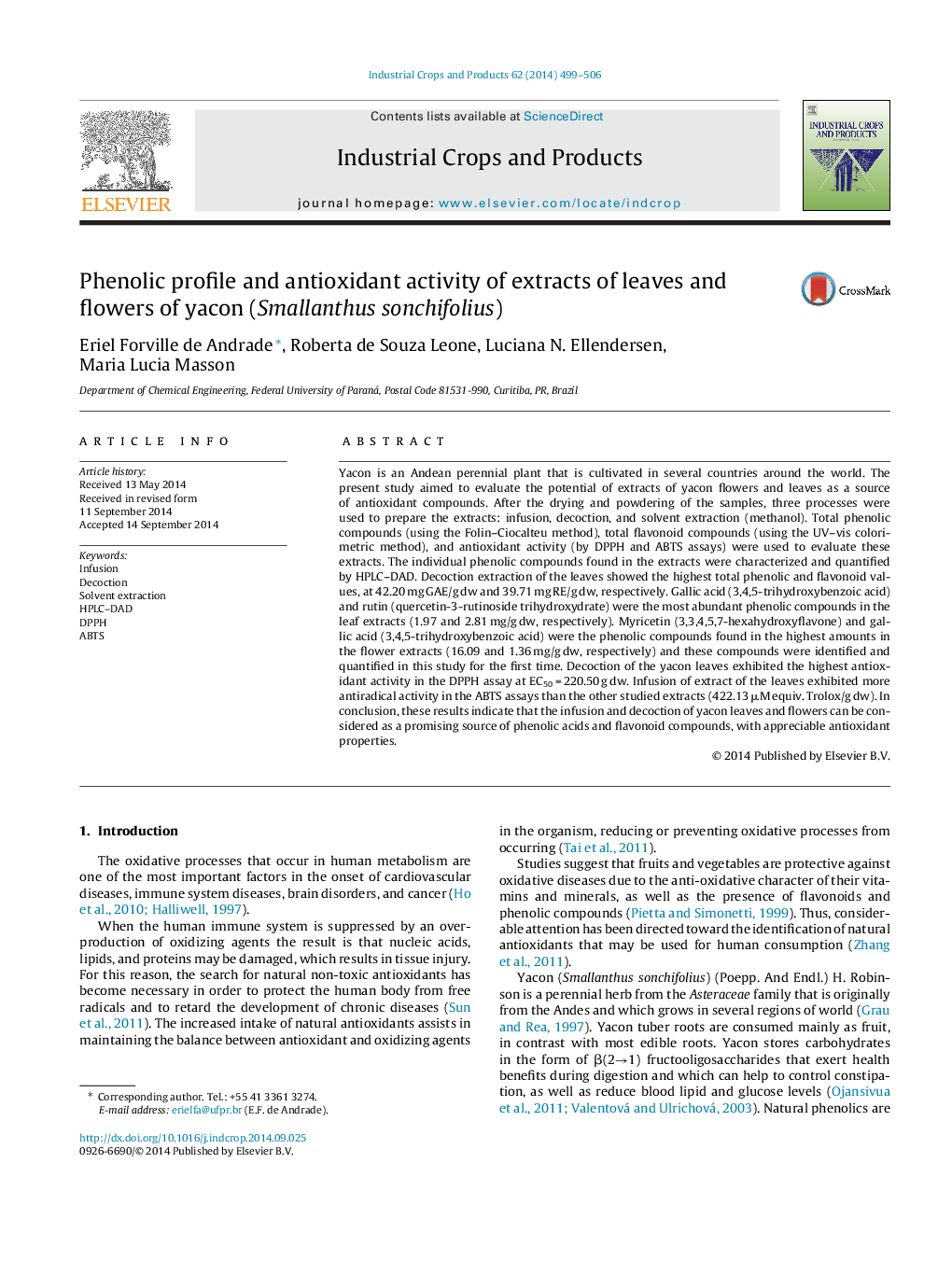| Article ID | Journal | Published Year | Pages | File Type |
|---|---|---|---|---|
| 6376464 | Industrial Crops and Products | 2014 | 8 Pages |
Abstract
Yacon is an Andean perennial plant that is cultivated in several countries around the world. The present study aimed to evaluate the potential of extracts of yacon flowers and leaves as a source of antioxidant compounds. After the drying and powdering of the samples, three processes were used to prepare the extracts: infusion, decoction, and solvent extraction (methanol). Total phenolic compounds (using the Folin-Ciocalteu method), total flavonoid compounds (using the UV-vis colorimetric method), and antioxidant activity (by DPPH and ABTS assays) were used to evaluate these extracts. The individual phenolic compounds found in the extracts were characterized and quantified by HPLC-DAD. Decoction extraction of the leaves showed the highest total phenolic and flavonoid values, at 42.20 mg GAE/g dw and 39.71 mg RE/g dw, respectively. Gallic acid (3,4,5-trihydroxybenzoic acid) and rutin (quercetin-3-rutinoside trihydroxydrate) were the most abundant phenolic compounds in the leaf extracts (1.97 and 2.81 mg/g dw, respectively). Myricetin (3,3,4,5,7-hexahydroxyflavone) and gallic acid (3,4,5-trihydroxybenzoic acid) were the phenolic compounds found in the highest amounts in the flower extracts (16.09 and 1.36 mg/g dw, respectively) and these compounds were identified and quantified in this study for the first time. Decoction of the yacon leaves exhibited the highest antioxidant activity in the DPPH assay at EC50 = 220.50 g dw. Infusion of extract of the leaves exhibited more antiradical activity in the ABTS assays than the other studied extracts (422.13 μM equiv. Trolox/g dw). In conclusion, these results indicate that the infusion and decoction of yacon leaves and flowers can be considered as a promising source of phenolic acids and flavonoid compounds, with appreciable antioxidant properties.
Related Topics
Life Sciences
Agricultural and Biological Sciences
Agronomy and Crop Science
Authors
Eriel Forville de Andrade, Roberta de Souza Leone, Luciana N. Ellendersen, Maria Lucia Masson,
